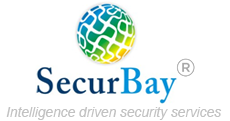Mid-terms Cyber Security Measures for Digital Economy
Digital economy is about being online – both mobile and the web applications making the cut. We covered the near term impact of risk modeling and management, two-factor authentication, cyber-intelligence and analysis, in our last blog. When we look at the mid-term solutions, they are influenced by few factors.
Firstly, government services are now accessible to citizens online. The government services are still web- based, and hence a large portion of the digital economy is still driven through web browsers. The e-commerce applications are moving towards mobile applications from web-based. So the midterm solutions would need resilient, trustworthy ecosystems; efficient security and privacy architectures; design methods and development tool chains; human behaviour modelling.
An example of such a resilient and trustworthy solution is the Apple iOS application ecosystem. If you were to develop an application on the iOS and you are launching the same, you will have to get your application approved. Apple has taken stringent measures to ensure that users of its iOS feel safe when they use their devices for their online activities. By enforcing a stringent set of rules that determine which software can and cannot run on its devices, the company has, for the most part, managed to keep its customers safe from malicious software. There has been a debate about the openness of such a system, but you can count it as one of the best examples of a right balance, especially coming to mid-term stability.
Let us look at another example – how research is being done in IEEE Computer Society. Last year the societylaunched a cybersecurity initiative with an aim to make an impact in the field of cybersecurity. The first step for the initiative was to launch the IEEE Center for Secure Design. The purpose of forming a concerned Design Center for security was to shift some of the focus in security from finding bugs to identifying common design flaws in the hope that software architects can learn from others’ mistakes.
The purpose of a secure design is to support and enforce necessary authentication, authorization, confidentiality, data integrity, accountability, availability, and non-repudiation requirements, even when the system is under attack as described in the mission statement of the Secure Design center.
As we have seen, the above two examples clearly state the need for evolving smaller ecosystems of checks and balances at a proactive level – one at an ecosystem and another one at an architecture level. We believe that larger enterprises, and large cloud based service providers who host small businesses will evolve such an ecosystem at the service delivery level which addresses the large clusters of users being able to enjoy a secure, but a stable environment. In our next blog, we will see certain factors which are beyond architecture and ecosystem level security measures that affect the cybersecurity for digital economy in the long term.
Previous blog : Near Terms cybersecurity solutions for Digital Economy
Next Blog: Long term Cybersecurity Measures for the Digital Economy






Comments are closed.